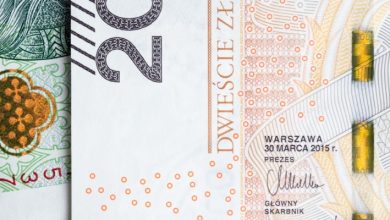The Role of Stablecoins in Stabilizing DeFi Markets

- Understanding the concept of stablecoins in DeFi
- How stablecoins contribute to the stability of DeFi markets
- The role of stablecoins in reducing volatility in DeFi
- Examining the benefits of using stablecoins in decentralized finance
- Challenges and opportunities for stablecoins in stabilizing DeFi markets
- Future outlook: the evolving role of stablecoins in DeFi ecosystems
Understanding the concept of stablecoins in DeFi
Stablecoins play a crucial role in the decentralized finance (DeFi) ecosystem by providing much-needed stability to the highly volatile crypto markets. These digital assets are designed to maintain a 1:1 peg with a fiat currency such as the US Dollar, Euro, or Japanese Yen. This pegging mechanism helps to minimize price fluctuations and ensures that users can transact with confidence without worrying about sudden value changes.
Stablecoins have become a popular choice for traders, investors, and users of DeFi platforms due to their predictability and ease of use. By using stablecoins, individuals can hedge against market volatility and preserve the value of their assets during times of uncertainty. Furthermore, stablecoins enable seamless cross-border transactions and facilitate access to financial services for individuals who may not have access to traditional banking systems.
In the DeFi space, stablecoins are utilized as a medium of exchange, a unit of account, and a store of value. They serve as a bridge between the crypto world and the traditional financial system, allowing users to move funds in and out of DeFi protocols quickly and efficiently. Additionally, stablecoins are used as collateral for borrowing and lending activities on DeFi platforms, providing liquidity to the ecosystem and enabling users to earn interest on their holdings.
Overall, stablecoins are an integral part of the DeFi landscape, offering stability, liquidity, and accessibility to users around the world. As the DeFi industry continues to evolve and grow, the importance of stablecoins in stabilizing the markets and driving innovation cannot be overstated. By understanding the concept of stablecoins and their role in DeFi, users can navigate the ecosystem with confidence and take advantage of the opportunities presented by this groundbreaking technology.
How stablecoins contribute to the stability of DeFi markets
Stablecoins play a crucial role in maintaining the stability of decentralized finance (DeFi) markets. These digital assets are designed to have a value pegged to a stable asset, such as the US dollar or gold, which helps reduce the volatility often associated with cryptocurrencies. By providing a reliable store of value within the DeFi ecosystem, stablecoins help mitigate the risks of price fluctuations and market crashes.
One way stablecoins contribute to the stability of DeFi markets is by serving as a safe haven for investors during times of market turmoil. When the value of other cryptocurrencies is in flux, stablecoins offer a secure alternative for traders looking to protect their assets from sudden price swings. This increased demand for stablecoins can help stabilize the overall DeFi market by providing liquidity and reducing volatility.
Additionally, stablecoins are often used as a unit of account in DeFi protocols, allowing users to transact and earn yields without being exposed to the price volatility of other cryptocurrencies. This stability fosters confidence among DeFi participants and encourages more widespread adoption of decentralized financial services. As the popularity of stablecoins continues to grow, their role in stabilizing DeFi markets is becoming increasingly significant.
Overall, stablecoins act as a cornerstone of stability within the DeFi ecosystem, providing a reliable foundation for decentralized financial activities. By offering a secure store of value, mitigating price fluctuations, and serving as a unit of account, stablecoins contribute significantly to the overall stability and sustainability of DeFi markets. As the DeFi space continues to evolve, the importance of stablecoins in maintaining a healthy and robust ecosystem cannot be overstated.
The role of stablecoins in reducing volatility in DeFi
Stablecoins play a crucial role in reducing volatility within the decentralized finance (DeFi) ecosystem. By pegging their value to a stable asset such as the US Dollar or gold, stablecoins provide a reliable store of value for users engaging in DeFi activities.
One of the main benefits of stablecoins is their ability to mitigate the price fluctuations that are common in the cryptocurrency markets. This stability ensures that users can transact and invest in DeFi platforms without having to worry about sudden and drastic changes in the value of their assets.
Moreover, stablecoins serve as a bridge between traditional financial systems and the world of DeFi. By offering a familiar unit of account, stablecoins make it easier for users to understand and engage with DeFi protocols, ultimately helping to increase adoption and liquidity within the ecosystem.
Overall, stablecoins provide a solid foundation for the DeFi markets, helping to reduce volatility, increase stability, and facilitate seamless transactions. As the DeFi space continues to grow and evolve, stablecoins will undoubtedly play an essential role in shaping its future trajectory.
Examining the benefits of using stablecoins in decentralized finance
Decentralized finance (DeFi) has seen tremendous growth in recent years, offering users the opportunity to participate in a variety of financial activities without the need for traditional intermediaries. One key component of DeFi is stablecoins, which are cryptocurrencies designed to minimize price volatility by being pegged to a stable asset such as the US dollar or gold.
Stablecoins play a crucial role in stabilizing DeFi markets by providing a reliable store of value and medium of exchange. Unlike volatile cryptocurrencies like Bitcoin, stablecoins offer users a more predictable and less risky option for conducting transactions and storing wealth within the DeFi ecosystem. This stability can help attract more users to DeFi platforms and increase overall liquidity in the market.
Furthermore, the use of stablecoins in DeFi can help mitigate the impact of market fluctuations and reduce the risk of impermanent loss for liquidity providers. By using stablecoins as collateral for loans, users can protect themselves from sudden price swings and ensure that their assets maintain their value over time. This can lead to a more sustainable and secure DeFi environment for all participants.
Overall, the benefits of using stablecoins in DeFi are clear. They provide stability, liquidity, and risk mitigation for users, making them an essential component of the decentralized financial ecosystem. As DeFi continues to evolve and grow, stablecoins will likely play an increasingly important role in stabilizing markets and attracting more participants to this innovative and disruptive sector of the cryptocurrency industry.
Challenges and opportunities for stablecoins in stabilizing DeFi markets
Stablecoins play a crucial role in the decentralized finance (DeFi) ecosystem by providing a reliable store of value and a medium of exchange without the volatility typically associated with cryptocurrencies. These digital assets are pegged to fiat currencies such as the US Dollar, Euro, or Japanese Yen, ensuring price stability and reducing the risk of market fluctuations.
One of the main challenges facing stablecoins in stabilizing DeFi markets is the potential for regulatory scrutiny and oversight. As governments and financial authorities around the world begin to pay more attention to the booming DeFi space, stablecoins could come under increased regulatory pressure, which may affect their ability to operate freely and maintain their peg to fiat currencies.
Despite these challenges, stablecoins also present significant opportunities for stabilizing DeFi markets. By providing a reliable and stable medium of exchange, stablecoins can help reduce the volatility and risk associated with DeFi investments, attracting more traditional investors to the space. Additionally, stablecoins can facilitate faster and more efficient transactions within the DeFi ecosystem, improving liquidity and market stability.
Future outlook: the evolving role of stablecoins in DeFi ecosystems
The future outlook for the evolving role of stablecoins in decentralized finance (DeFi) ecosystems looks promising. As the DeFi space continues to grow and mature, stablecoins are expected to play an increasingly vital role in stabilizing and supporting the various DeFi markets.
Stablecoins are digital assets that are pegged to a stable reserve asset, such as the US dollar or gold. They offer a reliable store of value and a medium of exchange within DeFi platforms, helping to mitigate the volatility that is often associated with cryptocurrencies.
In the future, stablecoins are likely to become even more integrated into DeFi ecosystems, serving as a fundamental building block for various financial applications. They can be used for lending, borrowing, trading, and other financial activities, providing users with a stable and predictable asset to transact with.
Moreover, as the demand for decentralized finance continues to rise, stablecoins will play a crucial role in attracting traditional investors and institutions to the DeFi space. Their stability and transparency make them an attractive option for those looking to diversify their portfolios and access the benefits of blockchain technology.
Overall, the future of stablecoins in DeFi ecosystems is bright. As the DeFi space evolves and expands, stablecoins will continue to play a key role in providing stability, liquidity, and accessibility to users around the world. Their importance is only expected to grow as more people recognize the value they bring to the decentralized finance landscape.



